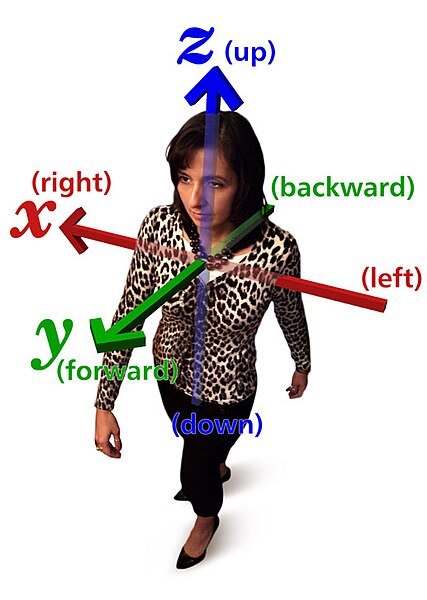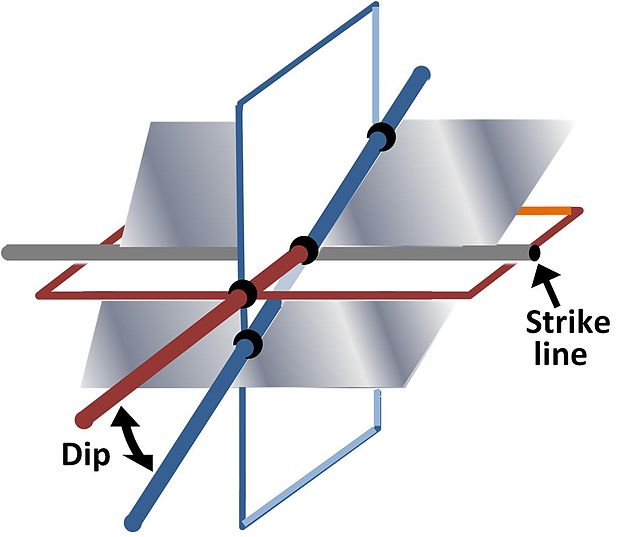Body relative directions are geometrical orientations relative to a body such as a human person's body or a road sign.
The most common ones are: left and right; forward and backward; up and down.
They form three pairs of orthogonal axes.
A non-flipped image of a right-handed Cartesian coordinate system, illustrating the x (right-left), y (forward-backward) and z (up-down) axes relative to a human being.
This statue holds a sword in its proper right hand
Type compositing
In geometry, the orientation, attitude, bearing, direction, or angular position of an object – such as a line, plane or rigid body – is part of the description of how it is placed in the space it occupies.
More specifically, it refers to the imaginary rotation that is needed to move the object from a reference placement to its current placement. A rotation may not be enough to reach the current placement, in which case it may be necessary to add an imaginary translation to change the object's position. The position and orientation together fully describe how the object is placed in space. The above-mentioned imaginary rotation and translation may be thought to occur in any order, as the orientation of an object does not change when it translates, and its position does not change when it rotates.
Strike line and dip of a plane describing attitude relative to a horizontal plane and a vertical plane perpendicular to the strike line




